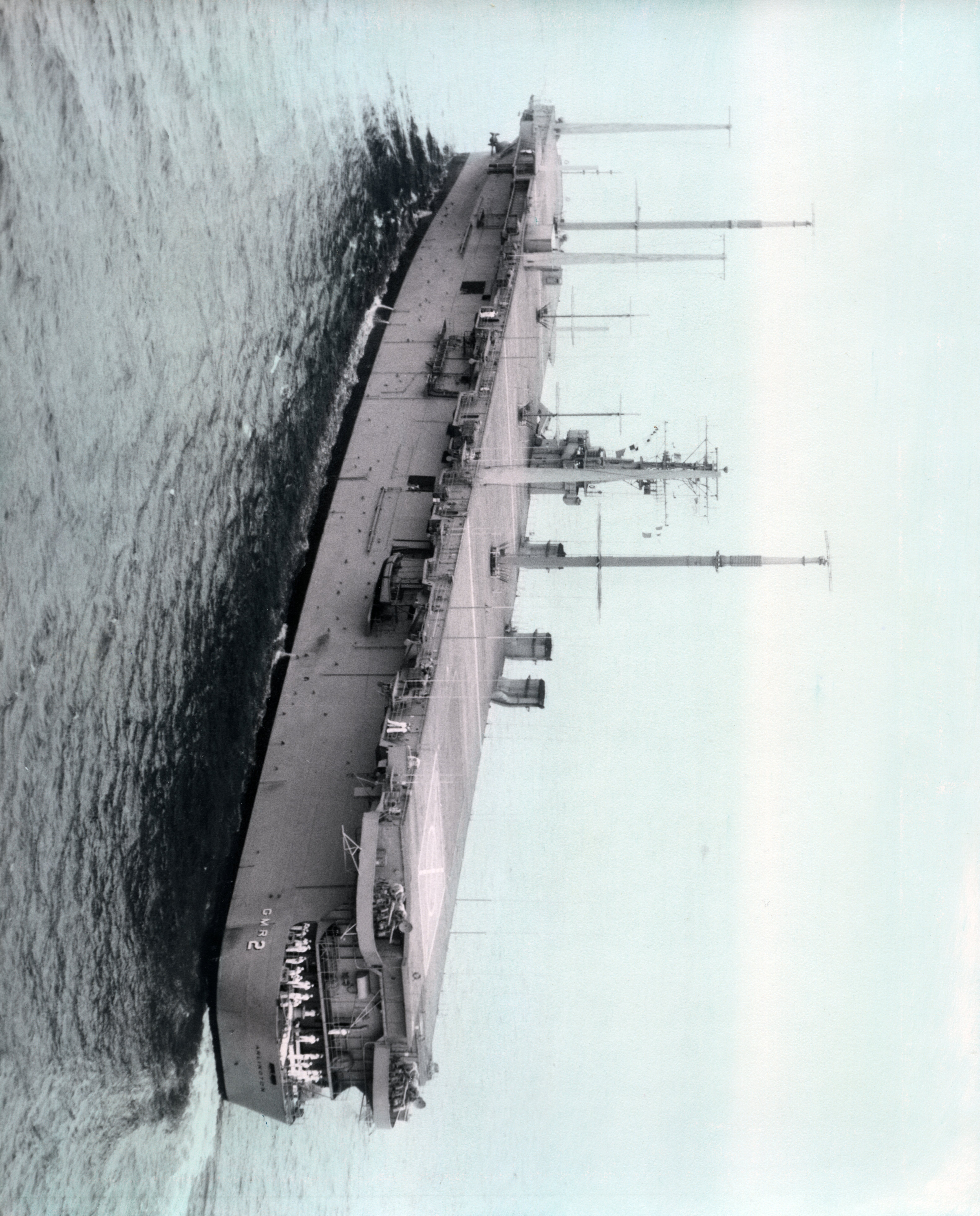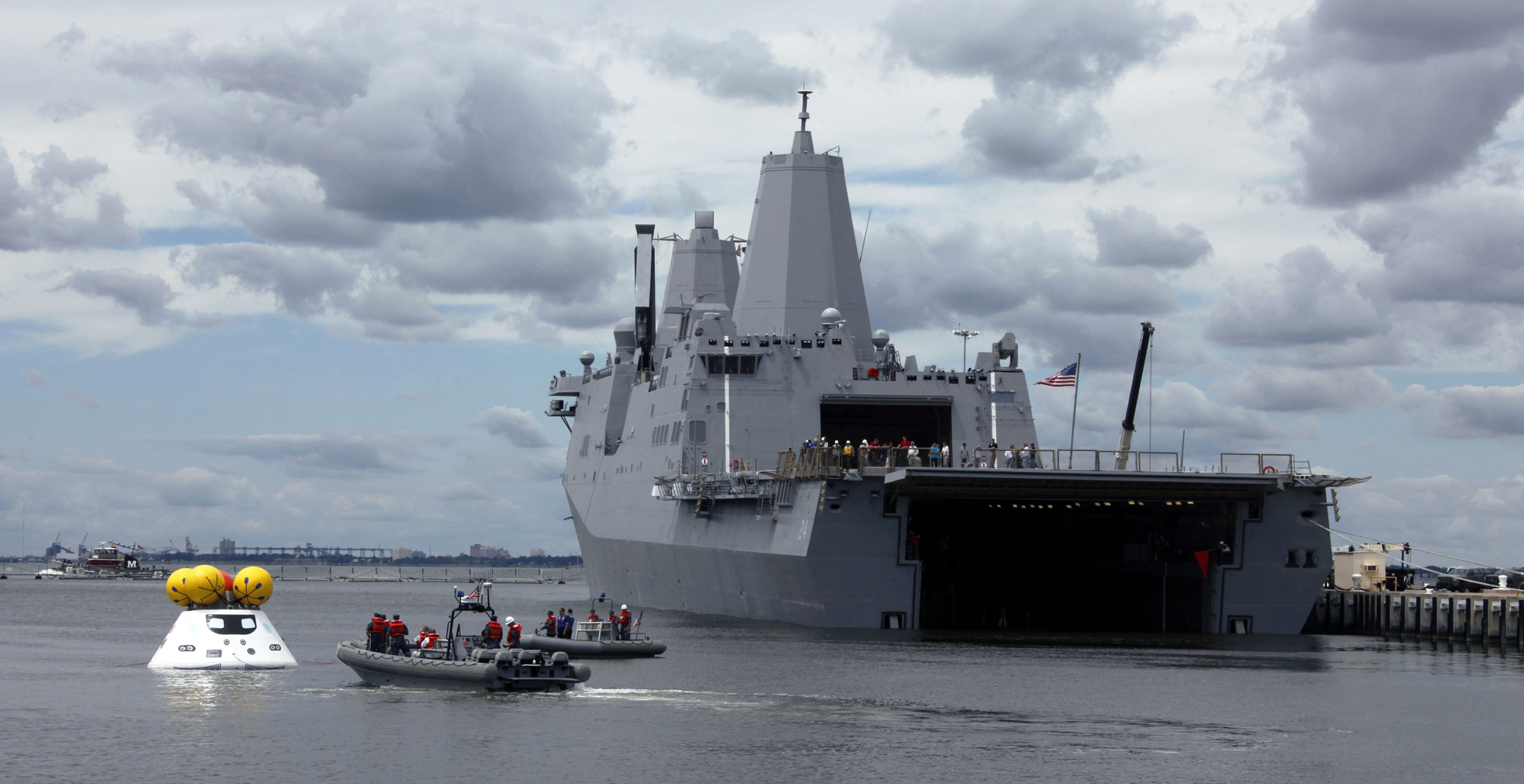Arlington's Naval Voyage Through the 20th Century
The first USS Arlington, c. 1947;
Photo Courtesy of Naval History and Heritage Command
World War Two
The first United States Navy Ship to be named Arlington was a general cargo ship that was converted into a troop transport in 1944 for World War Two. Capable of carrying over 1,000 soldiers, the Arlington acted as a training vessel for sailors on the West Coast. It then became a troop transport at the end of the war.
The Arlington was decommissioned in 1946 and remained in the Navy’s reserve fleet until it was sold for scrap in the 1960s.
The second USS Arlington after conversion, c. 1960s;
Photo from CLH collections
Cold War Communications
As the technology of the Cold War advanced, need arose for a powerful communications ship that could relay messages anywhere across the world. In 1967, the former aircraft carrier USS SAIPAN was converted into a Communication Relay Ship and officially commissioned as the USS Arlington in honor of the Arlington Radio Towers, which had been the site of the first trans-Atlantic voice communication in 1915.
At a length of 684 feet, a crew of about 1,000 men, and a top speed of 33 knots, the Arlington was the ideal choice to act as a communication relay hub. After beating the USS Boston in a race to Guantanamo Bay, the USS Arlington earned a reputation as one of the fastest ships in the Navy’s fleet. Upon winning the race, the ship adopted the nickname the “Road Runner,” and its crew displayed a flag of the television cartoon character when entering port or pulled alongside another ship for refueling or to provide assistance. They also played the character’s theme song whenever the flag was raised.
After participating in NATO training exercises across Europe, the Arlington acted as communication support for US troops in Vietnam, most notably at the Gulf of Tonkin incident in August 1967.
President Nixon aboard the USS Arlington with Captain Murphree before the Apollo 11 landing, 1969;
Photo courtesy of NavSource.
Assisting the Space Race
Thanks to its advanced radio and communication capabilities, the USS Arlington assisted in the return of several Apollo spaceships. In December, 1968, it served as the primary communication ship for the recovery of Apollo 8, and in May, 1969, it assisted in the recovery of Apollo 10.
Because the USS Arlington was stationed near the landing zone, it was chosen as one of the main ships in assisting in the recovery of the Apollo 11 astronauts after they reached the moon in July 1969. The role of the USS Arlington was classified, and not revealed to the public until years after the landings.
The USS Arlington’s contribution to the Apollo missions would be its last for the US Navy. The Arlington returned to the United States in January of 1970 to be decommissioned and was officially sold as scrap in 1976.
Although the ship was only formally active for 4 years, it was awarded 7 campaign stars for its efforts in Vietnam.
The third USS Arlington participates in recovery training of the Orion capsule, 2013;
Photo courtesy of NASA
USS Arlington Today
In 2004, the US Navy decided to name 3 of the Navy’s new ships in honor of the 9/11 attacks. The USS Arlington was launched in 2010, along with the sister ships USS New York and USS Somerset.
In 2013, the new USS Arlington helped NASA in stationary recovery training of the Orion spacecraft.
The USS Arlington honors the 184 victims and thousands of emergency, fire and rescue personnel of Arlington Country and localities in the National Capital Region who provided critical emergency assistance after the attack. The ship was built with a museum to honor the victims of the Pentagon which includes pieces of steel from the Pentagon 9-11 crash site. To read more about the USS Arlington, visit https://www.arlingtonva.us/Government/Topics/ussarlington
To learn more about Arlington's history, visit the Center for Local History on the first floor of the Central Library.
Do you have a question about this story, or a personal experience to share?
Use this form to send a message to the Center for Local History.
Center For Local History - Blog Post Message Form
Do you have a question about this story, or a personal experience to share? Use this form to send a message to the Center for Local History.
"*" indicates required fields



